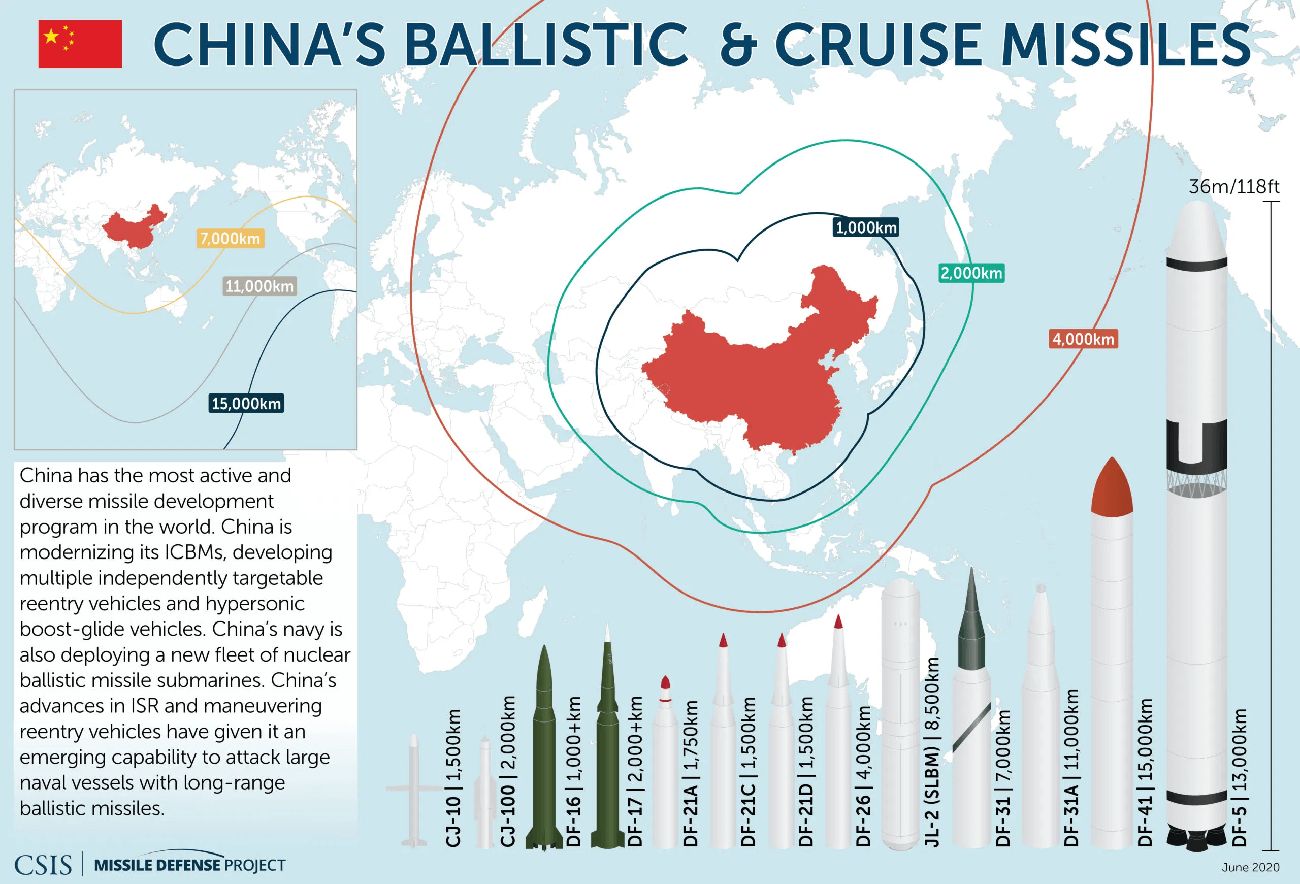China Is Sharpening Its Ability To Shoot Down Ballistic Missiles; Sends Ominous Signals To The US, India And All of Asia

China’s test of a ground-based anti-ballistic missile (ABM) test last week and US counter-persecution risk an arms race in Asia. Developments could force both countries and their allies to develop systems to counteract the effectiveness of the other.
This is also happening in the midst of rising tensions in the Western Pacific with Taiwan and the Korean Peninsula, where North Korea’s relations with the South and the United States continue to deteriorate. Pyongyang is conducting missile tests in response to what it perceives as a growing Washington-Seoul military alliance.
While it was unclear which missile China was using to conduct the AMB test, a Pentagon report from 2021 identified that the CH-AB-X-02 (HQ-19) may have an ABM capability.
“China is also developing kinetic-kill vehicle technology to set up a midcourse interceptor that will form the top tier of a multi-tiered missile defence.”
Experts believe this is in line with China’s development of the Dong Neng series of ABMs, which also have an anti-satellite capability (ASAT). Another Chinese system experiment is the HQ-26 series, which is similar to the US SM-3 series.
On February 20, 2008, a Standard Missile-3 (SM-3) was launched from a US Navy Aegis system-activated destroyer to take out the US-193 reconnaissance satellite, which the Americans said was in decay and threatened Earth with the toxic hydrazine fuel on board. .
The latest Chinese test brings the total number of such tests to six, where they were previously performed in 2010, 2013, 2014, 2018 and 2021. Although it is unknown which interception phase the 2014 test ended, the other five intercepted the missile in the mid-term phase.
Intercontinental Ballistic Missiles
An intercontinental ballistic missile (ICBM) travels in three phases. The first, the boost stage, propels the missile from the ground from the launch site. It is the easiest and yet risky to intercept a missile here, as it would be deep inside enemy territory.
Mid-course stage is the second where it reaches the top of its parabolic arc path and is briefly outside the atmosphere. It is difficult to intercept a missile here as it has gone outside the atmosphere and has a very high speed.
However, ground, air and space monitoring systems make it easier to detect it at this stage. In the third and final terminal phase (or re-entry phase) the missile drifts down to Earth at an enormous speed.
Arms Race Between The United States And China
However, this heralds a possible arms race between the two superpowers. The development of ABM systems usually encourages opposing countries to develop even advanced delivery systems that can bypass them in an escalating cycle of countermeasures.
It is the classic ‘shield versus sword’ phenomenon where a person with a larger shield will force their opponent to strike preventively with the sword. This is because the larger shield can encourage its holder to attack first and use its shield to permanently protect itself from any retaliatory attack, making the word redundant.
In the field of nuclear strategy, a country with a weak (or possibly non-existent) ABM system may fear that its ballistic missile arsenal is in vain, as it will foresee that its opponent will attack first and then hire ABM to make itself immune to for any retaliatory attack.
The United States’ withdrawal from the 1972 anti-ballistic missile defence (ABM) treaty on December 13, 2001 triggered another arms race due to the acceleration it affected Russian, Chinese, and eventually Indian missile programs.
This is not the first time the United States has withdrawn from treaties to prevent arms races and nuclear build-up.
Since 1996, the United States has failed to ratify the Comprehensive Test Ban Treaty (CTBT) and has expressed reluctance to renew the 2010 New Start Agreement under President Donald Trump. It also withdrew from the 1987 Intermediate-Range Nuclear Forces (INF) Treaty on 2 February 1919.
The New Start Treaty, signed between former US and Russian Presidents Barack Obama and Dmitry Medvedev, called for cutting their strategic warheads down to 1550. The most recent was the withdrawal from the Open Skies Treaty with Russia on 21 May 2020.
On a broader level, the Chinese test may also be a response to India’s latest series of tests of its Agni missile. Infographics and details released by the government often show the missile’s ability to reach deep inside China.
But given China’s perception of the United States as its primary military, economic and strategic rival and New Delhi and Beijing, which are currently on the verge of de-escalating their relations, this seems unlikely.
US Nuclear Modernization
Also, the United States plans to spend $ 1.5 trillion on improving each leg of its nuclear triad, leading with the Earth-Based Strategic Deterrence (GBSD), which many experts have said is an absurd and pointless endeavour.
Essentially, they point to how the United States already has a highly survivable nuclear delivery system, with 70% of it deployed on its ballistic missile submarines (SSBNs) and stealth aircraft, which are less likely to be intercepted by Russian or Chinese systems.
Moreover, a new ICBM as a GBSD will mean that it will first be fired at Russia or China, where each country mistakenly believes that is the goal. For example, a missile aimed at China flying over Russia could provoke Moscow to fire its missiles, leading to an unintentional nuclear exchange between the two countries.
The results for the world, even with a single nuclear exchange, would be catastrophic.




No comments:
Post a Comment